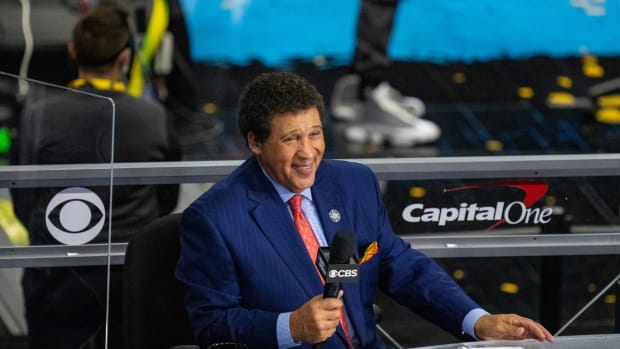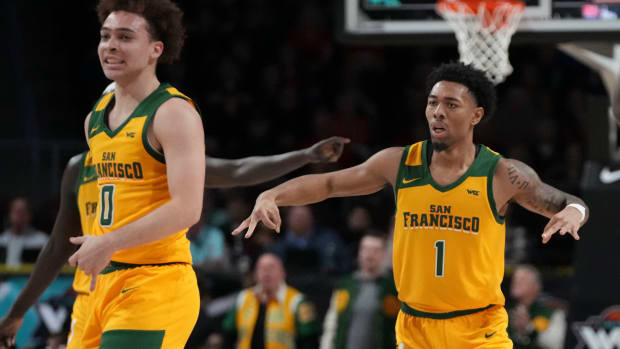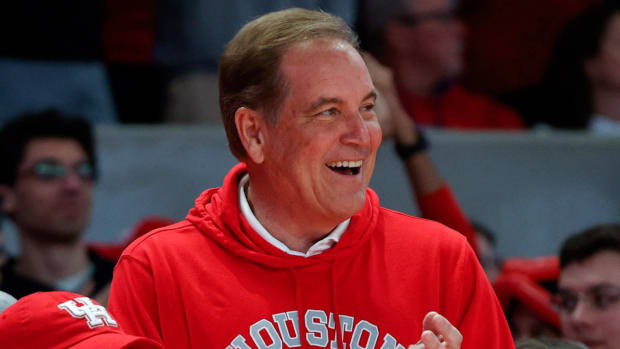
Top four sports technology storylines to follow during the 2016 NHL season
Read about the latest sports tech news, innovations, ideas and products that impact players, fans and the sports industry at SportTechie.com.
The NHL kicked off its 2016-17 season last week and with the new campaign comes a series of sports technology storylines to follow over the next eight months.
Here are the top four headlines and technology angles SportTechie is following this season:
1. Tablet Integration On Benches
The NHL recently wrapped up the 2016 World Cup of Hockey last month in Canada. Throughout the two-week tournament, the NHL positioned tablet-based devices on teams’ benches and around the rink for coaches to use at their discretion. Coaches had access to real-time game footage and highlights to assist with coaches’ challenges as well as tactical purposes.
Subscribe to the
SportTechie Newsletter
- Magic Johnson, David Stern Invest in ShotTracker TEAM
- New Gatorade Sports Science Institute Satellite Lab Officially Opens
- Nike Co-Founder Phil Knight Gives $500 Million To Oregon For Science Complex
Unlike the NFL with Microsoft, for example, the NHL does not have an official tablet provider just yet. For now, home teams are responsible for deploying tablets and subsequent video feeds for themselves and away teams for use during games for challenges. While there are no specific qualifications for the tablets, it will be interesting to see if the lack of uniformity impacts any challenges throughout the year or if there are any hardware issues with certain tablets.
It is only a matter of time before the league locks in a tablet provider, with Microsoft and Apple currently working with the NFL and MLB.
2. Tracking Technology Is Put To The Test
“We’re ready to embrace technology that isn’t a gimmick,” said Gary Bettman, NHL Commissioner.
Bettman remarked following an early look at the technology being integrated into the World Cup of Hockey a month ago, which included player, referee and puck tracking technology. Provided by Sportvision, it was the first use of the technology in non-exhibition games. Body cameras worn by officials also gave fans and broadcasters a unique perspective of everything happening around the rink.On the ice, tracking devices were placed in pucks and on the back of player jerseys in order to to track movements throughout the Air Canada Centre in Toronto. Some of the data included puck and player speed, distance traveled, puck trajectory, player ice time, zone time, shots, shot distance, shot direction and possession statistics.
While the information will eventually prove to be valuable to coaches and players, the NHL is still in testing mode like other technology integrations it is currently experimenting with.
Leagues like the NFL are a few steps ahead of the NHL in terms of incorporating similar forms of player tracking technology into regular season games. For the 2016 season, the NFL in collaboration with Zebra Technologies has implemented tracking chips into players’ shoulder pads to capture different metrics like speed, acceleration, deceleration, distance traveled and alignment.
For a similar league-wide rollout with the NHL, that would mean 30 different venues and franchises would need to be on board for all 1,200-plus regular season games and potentially post-season, too.
“I’m not under-estimating (the cost),” Sportvision CEO Hank Adams recently told Yahoo Sports. “To put all of this equipment in stadiums is expensive. So it comes down to how we’re using the data, what the effects are going to be and what is the benefit to the fans. Is it worth it?”
3. Upgrading Digital With BAMTech Partnership
In time for the NHL’s centennial year, the league revamped its digital offerings, including a new NHL.TV tvOS app for Apple TV in addition to an updated NHL app and the league’s equivalent of Major League Baseball‘s Ballpark app.
The new app, called Arena, was created by streaming partner and digital product provider BAMTech, a recent spinoff of Major League Baseball Advanced Media. Those fans at the 12 participating venues will have the opportunity buy tickets and present them on their smartphones and also take advantage of in-seat delivery for food and beverage.
NHL.TV, which is the league’ s OTT streaming service, will give die-hard fans and cord cutters the ability to stream out-of-market games live as well as on-demand across various platforms, such as iOS, Android, Xbox One, PlayStation 4 and Apple TV.
4. Digital Dasherboards Make Appearance
During the World Cup of Hockey, the NHL experimented with digitally enhanced dasherboards. The league worked with digital billboard company Supponor to create augmented reality dasherboards that are just visible on television.
Depending where fans were physically watching the World Cup would determine what dasherboard messaging they’d see throughout the tournament. The computer-generated imagery (CGI) technology displayed ads differently across the U.S., Canada and internationally, too.
Two years ago, the NHL tested “dynamic dasherboards” that would include virtual advertising technology and allow away broadcasters sell their own advertising inventory, with more expected experimentation during the 2015-16 season.
However, further testing wasn’t conducted until the World Cup of Hockey in September.
“The most interesting thing from a sponsor standpoint, and something that is immediately very popular, is the visually enhanced action boards — what we euphemistically call ‘erase and replace’ technology — which we haven’t used in our game before,” NHL Deputy Commissioner Bill Daly said last month. “We have virtual ads that we’ve used on the boards before, but we’ve never replaced dasher boards, and we found that by creating the digital dasher boards you can actually create a cleaner look, a more distinct and unique look for a single advertiser, which has been very attractive to our corporate sponsors.”
With all of the testing and conversation around digital advertising, it is only a matter of time before it is approved by the Board of Governors, either for next season or further down the road. I also wouldn’t be surprised to see more testing during the 2016-17 season at large-scale events such as the NHL All-Star Game.





